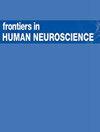在基于脑电图的脑机接口中改进受试者自我调节的运动想象训练
IF 2.4
3区 医学
Q3 NEUROSCIENCES
引用次数: 0
摘要
对于基于脑电图(EEG)的运动意象(MI)脑机接口(BCI)系统,过去二十年来,人们更关注先进的机器学习算法,而非有效的运动意象训练方案。然而,在校准过程中,协助受试者调节其活动大脑以完成内生 MI 任务至关重要,这将有助于使用各种机器学习算法进行信号处理。因此,我们提出了一种试验反馈范式来改进多元智能训练,并引入一种非反馈范式进行比较。每个范式对应一次训练。两个范式分别应用于相应会话的校准运行。并在随后的测试运行中验证其有效性。与非反馈范式不同的是,试验-反馈范式会在每次 MI 训练试验后实时呈现地形图及其定性评估,以便受试者及时了解当前试验是否成功诱发了事件相关非同步化/事件相关同步化(ERD/ERS)现象,从而在下一次 MI 试验中调整自己的大脑节奏。此外,在试验反馈环节的每次校准运行后,都会对特征分布进行可视化和量化,以显示受试者区分不同 MI 任务的能力,并促进他们在下一次校准运行中进行自我调节。此外,如果受试者在非反馈和试验反馈环节的训练过程中感到分心,他们可以执行眨眼动作,该动作将被眼电图(EOG)信号捕获,相应的多元智能训练试验将被放弃。十名健康参与者在不同的日期依次进行了非反馈和试探反馈训练。实验结果表明,与非反馈训练相比,试验-反馈训练的空间滤波器可视化效果更好,受益者更多,离线和在线平均分类准确率更高,这表明试验-反馈范式有助于受试者的自我调节,并能很好地完成MI任务。本文章由计算机程序翻译,如有差异,请以英文原文为准。
Improved motor imagery training for subject’s self-modulation in EEG-based brain-computer interface
For the electroencephalogram- (EEG-) based motor imagery (MI) brain-computer interface (BCI) system, more attention has been paid to the advanced machine learning algorithms rather than the effective MI training protocols over past two decades. However, it is crucial to assist the subjects in modulating their active brains to fulfill the endogenous MI tasks during the calibration process, which will facilitate signal processing using various machine learning algorithms. Therefore, we propose a trial-feedback paradigm to improve MI training and introduce a non-feedback paradigm for comparison. Each paradigm corresponds to one session. Two paradigms are applied to the calibration runs of corresponding sessions. And their effectiveness is verified in the subsequent testing runs of respective sessions. Different from the non-feedback paradigm, the trial-feedback paradigm presents a topographic map and its qualitative evaluation in real time after each MI training trial, so the subjects can timely realize whether the current trial successfully induces the event-related desynchronization/event-related synchronization (ERD/ERS) phenomenon, and then they can adjust their brain rhythm in the next MI trial. Moreover, after each calibration run of the trial-feedback session, a feature distribution is visualized and quantified to show the subjects’ abilities to distinguish different MI tasks and promote their self-modulation in the next calibration run. Additionally, if the subjects feel distracted during the training processes of the non-feedback and trial-feedback sessions, they can execute the blinking movement which will be captured by the electrooculogram (EOG) signals, and the corresponding MI training trial will be abandoned. Ten healthy participants sequentially performed the non-feedback and trial-feedback sessions on the different days. The experiment results showed that the trial-feedback session had better spatial filter visualization, more beneficiaries, higher average off-line and on-line classification accuracies than the non-feedback session, suggesting the trial-feedback paradigm’s usefulness in subject’s self-modulation and good ability to perform MI tasks.
求助全文
通过发布文献求助,成功后即可免费获取论文全文。
去求助
来源期刊

Frontiers in Human Neuroscience
医学-神经科学
CiteScore
4.70
自引率
6.90%
发文量
830
审稿时长
2-4 weeks
期刊介绍:
Frontiers in Human Neuroscience is a first-tier electronic journal devoted to understanding the brain mechanisms supporting cognitive and social behavior in humans, and how these mechanisms might be altered in disease states. The last 25 years have seen an explosive growth in both the methods and the theoretical constructs available to study the human brain. Advances in electrophysiological, neuroimaging, neuropsychological, psychophysical, neuropharmacological and computational approaches have provided key insights into the mechanisms of a broad range of human behaviors in both health and disease. Work in human neuroscience ranges from the cognitive domain, including areas such as memory, attention, language and perception to the social domain, with this last subject addressing topics, such as interpersonal interactions, social discourse and emotional regulation. How these processes unfold during development, mature in adulthood and often decline in aging, and how they are altered in a host of developmental, neurological and psychiatric disorders, has become increasingly amenable to human neuroscience research approaches. Work in human neuroscience has influenced many areas of inquiry ranging from social and cognitive psychology to economics, law and public policy. Accordingly, our journal will provide a forum for human research spanning all areas of human cognitive, social, developmental and translational neuroscience using any research approach.
 求助内容:
求助内容: 应助结果提醒方式:
应助结果提醒方式:


